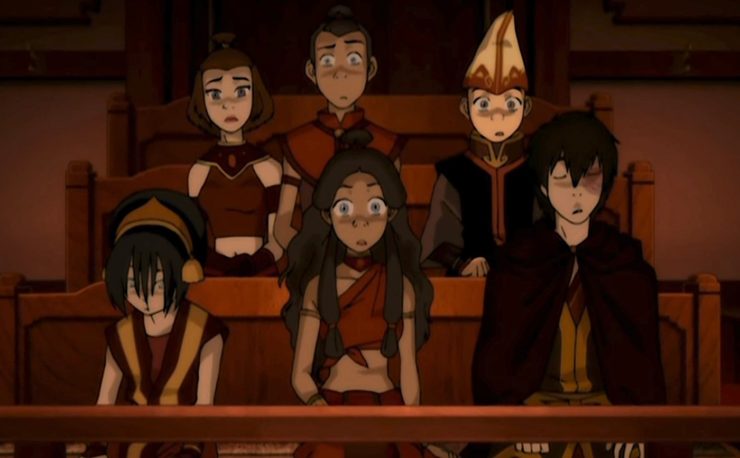One of the most popular animated series of all time, Avatar: The Last Airbender, is having something of a resurgence due to being added to Netflix’s library of shows. With the news that the sequel series Legend of Korra, would be joining Netflix in August, we’re all thinking about how the Avatar universe influenced our world. During today’s Comic-Con@Home 2020 panel, one of the original creators of the show, Michael DiMartino, sat down with comics creators Faith Erin Hicks and Gene Luen Yang, as well as author F.C. Yee to discuss Avatar‘s lasting influence.
On the legacy of Avatar:
F.C. Yee: “I feel like Avatar both shaped and broke the mold for an entire generation of creatives. It inspired so much of us, it’s just where our heads go when we think about what we really love and what we would like to be like and, you know, what depths we would like to accomplish as creative professionals.”
Faith Erin Hicks: “I feel like Avatar is just this Platonic ideal of what is an amazing fantasy story for kids; it has everything. It’s absolutely influenced and inspired my work right from the beginning.”
Mike DiMartino: “Brian and I just were animation dudes back in the early 2000s who wanted to make a TV show that was cool and that we liked and that hopefully would stand the test of time, which it somehow has. In some ways I feel like we got lucky too in that this show even got made, and that we got to tell the story the way we wanted to. At the time doing a kind of continuous story in kids animation was not a thing that was happening. It was common in Japan, but not in the US and certainly not on Nickelodeon, they were kind of confused by what we were making. But to their credit, they were like alright, you guys seem to know what you’re doing so we’ll let you run with this idea. I think part of the reason why now that the original series is on Netflix, why it’s doing so well is that it kind of fits that format already. Even though there’s standalone episodes, it’s a continuous storyline.”
Yee: “It’s established that it’s a living world, it’s got a past, it’s got a future, it’s got a present and any time you dip in for a particular story for part of that timeline, it’s alive, it’s going to evolve over time. It evolved from all the worldbuilding that the show had.”
Hicks: “It’s so unusual, particularly in the time [Mike was] making it, it was unusual where you had an animated show where the characters would evolve. They would change and grow over the course of three seasons. I do feel like the characters are probably why it stands the test of time. People return because they love these characters so much. I feel like Toph in particular was such a big deal for me. I was this huge tomboy as a kid, and now I feel like we’re having this huge surge of women in animation and female characters and animated shows with female leads that’s incredibly important. But earlier in the 90s, in the aughts, it felt like that was incredibly rare to have this strong, tough, tomboy female character in an animated show. And also to have a show with multiple female leads—we had Katara, we had Toph, we had Azula, we had Mei, we had Ty Lee, there were so many women in this show. That was something that really spoke to my heart as someone who worked in animation… and watching the characters grow and transition and change over the course of three seasons, it was so unusual. And that’s why I continued to return to that show and continue to be inspired by it, and wanting to put that heart and that empathy into my own work. It was so different.”
Gene Luen Yang: “I think it’s hard to describe the extent of of the influence of that original show. I think you’d probably find it in almost any story that’s being told right now, especially if it’s for kids. Even if it’s not a fantasy story, I think there’s some element of Avatar in there… I do think some of the magic is like, you can’t even put your finger on it. It’s almost hard to capture. But it is the worldbuilding, and the characters I think are really incredibly real, they all have very relatable flaws. Even Aang has these struggles with anger, these struggles with cowardice—these are all things we deal with on a daily basis. And I think, as somebody whose written in that world, you can tell that it’s a really good world because some of those stories write themselves. Some of those characters… you just give them a little nudge, and then you can hear Toph talking in your head and you just write down what you hear, because she’s so well defined. That world and those characters are so well defined, they write themselves.”
Check out the rest of the panel above, and share your favorite Avatar: The Last Airbender moments in the comments!










